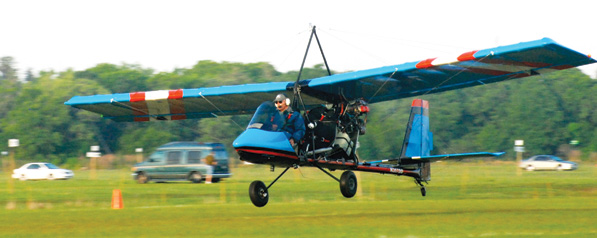
Start with a big aluminum tube and call that a fuselage. Stick on a little nose cone with a motorcycle windshield and some seats, a tail in the back, wheels on the bottom. Attach a parasol wing with struts, support the wings with wires—top and bottom—and then add a pusher engine. In your mind, you may see this as a child’s dream, only the beginnings of an airplane. But actually it’s all grown up. This is the Drifter, and it offers about as much open-air flying as you can get.
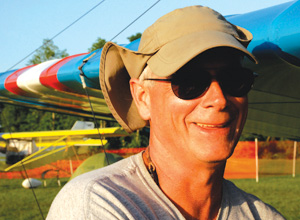
Flying it is similar to piloting an AirCam, also sold by Lockwood, only more so. Like the AirCam, which started with two-stroke engines, the Drifter is now available with the four-stroke Rotax 912S, and that’s the version, called the Super Drifter, that we flew.
The Drifter design has been around since 1983, when a single-seat version, created by Maxair, flew with a Rotax 277. There were one- and two-seat versions available until Maxair went bankrupt in 1991. Drifter Aircraft in Australia continued the line with a strut-braced version, selling some through a U.S. dealer. Lockwood Aviation took over the wire-braced version in 1997. How did Lockwood get interested in the design? Phil Lockwood (of Lockwood Aviation) had been VP of sales and marketing at Maxair.
Super Means More Tail
Other differences between the two- and four-stroke versions include price, of course, and a bigger horizontal tail on the Super. A subtle difference is that the Super Drifter has 10 square feet more wing area. This is done by increasing the chord of the wing’s control surface from 8 inches to 12. On the Drifter, those controls are flaperons, but on the Super Drifter the flaps and ailerons are separate to keep the same aileron forces. The change in chord also moves the center of lift aft, which helps handle the more aft CG due to the greater weight of the Rotax 912S back there.
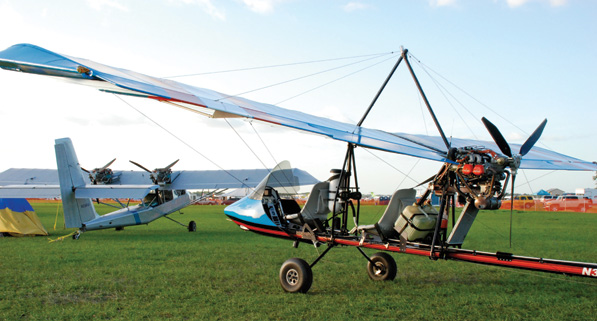
Lastly, the four-stroke 912S gives 30% better fuel burn than the two-stroke Rotax 582. These days, most of the Drifters going out the door have the 100-horsepower 912S engine, as opposed to the 80-hp 912, and many of those are put on floats.
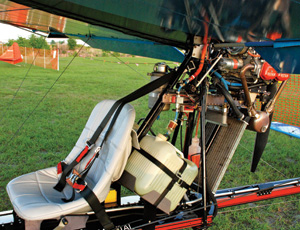
The wing uses a Drifter airfoil, now in its third generation, developed through inflight testing. Way back when, Lockwood would go out to the airport early, in the calm morning air, and flight-test two or three different rib shapes. He’d measure takeoff, climb, cruise, glide ratio and such, then land and replace the ribs in the sailcloth wings with a different set and test those. Eventually, the best rib won.
Grass Strips Welcome
George Weber, former VP of sales but now president of AirCam at Lockwood Aircraft, put us in touch with Bob Moore, a semi-retired veterinarian of Tallahassee, Florida. Not necessarily your average builder, Moore has a homestead that includes an air-conditioned hangar on a private grass strip. He flies his gorgeous Drifter cross-country, too. After Sun ’n Fun, he flew to his parents’ house on the Florida Gulf Coast. Moore says that his 84-year-old mom “likes to go up flying with me a whole lot more than the wife does.”
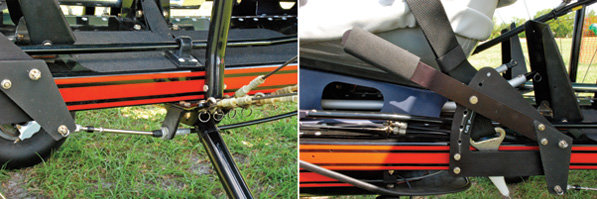
Moore got his start with 250 hours in powered parachutes, then got 50 hours of flight training, half in a Drifter and half in a CGS Hawk plus some in a Cherokee. He now has 350 hours in Drifters, and his is a licensed Experimental/Amateur-Built that he flies as a Sport Pilot. His current building project is a RANS S-19.
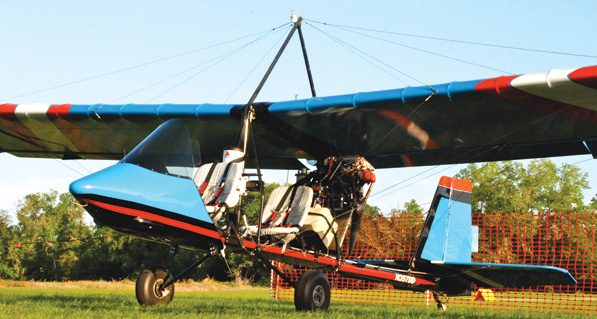
His Drifter was built in Dennis Franklin’s hangar, right next to the Lockwood facility in Sebring, Florida. (Franklin was the original manufacturer of the Drifter and owned the rights to the design at one point.) Moore built the plane, his first, in eight four-day stints, working 15 to 16 hours a day. It helped to have somebody around to explain things, because the Drifter construction manual is, well, old. Lockwood plans to update the manual, but that project is not yet on the front burner.
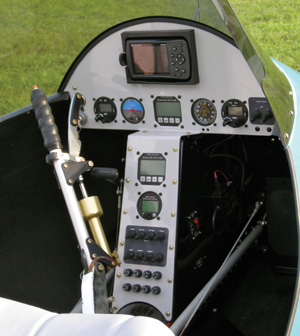
Most of the aluminum on Moore’s airplane is black powder-coated, with orange trim and even orange valve covers on the Rotax 912S, a teaser if you try to identify the engine horsepower by the valve-cover color. The TBO is upped to 2000 hours by the new oil-pressure-relief valve. Moore also added a soft-start ignition module that retards the spark on one ignition system to prevent kickback. Other goodies on this immaculate Super Drifter include a 406-MHz ELT and LED navigation and landing lights. Sweet!
We flew the Drifter on a morning with winds estimated at 8 gusting to 15, and early cumulus clouds to indicate that the thermals in Florida never really sleep. Moore has not flown his Drifter from the back seat, so we recruited safety pilot Laverne (who doesn’t give out his last name because he doesn’t like to be Googled).
Laverne has certainly paid his dues, with 5000 hours on his two-stroke Drifter and four rebuilds—due to accumulated flight time, not accidents. He also has a few thousand of those hours in the back seat.

Laverne also gives briefings to ultralight pilots who want to fly at Sun ’n Fun. I met him when I had questions about my qualifications to fly a single-seater at the show, and we recognized in each other a desire to fly safely. His first official act for this flight, the day before, was to give Moore’s plane a thorough going over, and he happened to find a few minor items that were quickly fixed.
Part of the preflight inspection turned up little nylon-looking tufts of thread all over the airplane, but mostly in the Velcro around the flap and aileron seals. “Know what that is?” Moore asked. I had no idea. Cottonwood? But there were no such trees around. “No, it’s spider webs,” he said. Little spiders expand their territory by thermalling on their webs. Later, Moore asked Laverne the same question. After hearing the answer, Laverne asked, “Does it taste like spider web?”
Properly briefed on indigenous midair collision hazards, it was time to mount up. Laverne tucked his magnificent gray ponytail into his jacket (“If you put it down your sleeve, it won’t come out in the air”) and got in the back.
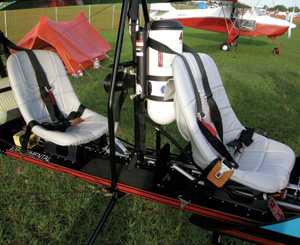
Up in the front, there were no toe brakes, but the one and only brake lever was on the front control stick, along with a simple little gadget that made a parking brake out of it. There were digital airspeed and altitude, a Garmin GPSMAP 496, and a few other gadgets and widgets.
One of the nice things about a plane as open as this is that the owner can safely start the engine from outside the airplane while the newbie watches the drill from the pilot’s seat. The throttle is just outboard of and adjacent to your left knee, and though it works fine, it feels awkward. The back-seater also has a throttle in an analogous location. Moore finessed the choke on the floor beside the seat and the throttle. Even with the soft-start module and starting on just that one ignition system, it took a little fussing to get the engine running. Then we sat and waited for things to warm up before taxi.
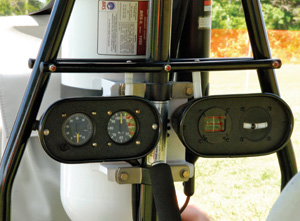
At the departure end of the runway, the ignition checked fine, the temperatures and pressures were good, and one notch of flaps was set with the lever to the left of the pilot’s seat. Operation is simple: Pull the flap lever outboard, move the lever and get a bolt to seat in one of the four positions. (On Moore’s airplane, the seat interferes with the bolt hole for full flap deflection, preventing the bolt from fully entering the hole, so there are really three usable seat positions.) I double-checked the flap position by leaning out and looking at it, wondering what leaning out like that would feel like in flight.
Up, Up and Away!
Once we were motioned out onto the active runway, Laverne added full power and we were off, with takeoff at about 35 knots indicated. We were quickly under the influence of the trashy air, as they properly refer to it, and Laverne turned us crosswind. Up front, there are no hand-holds for the insecure when you’re not flying, and Laverne said that he generally held onto the seat belts right above where they attach to the floor. That way, he said, you could either make the belts good and snug or pull yourself into the seat. It’s the familiar phenomenon where the pilot flying feels secure and in control, but the one not flying doesn’t. In the Drifter, it’s just you up there with a whole lotta nuttin’ between you and the ground. Happiness is a snug seat belt.
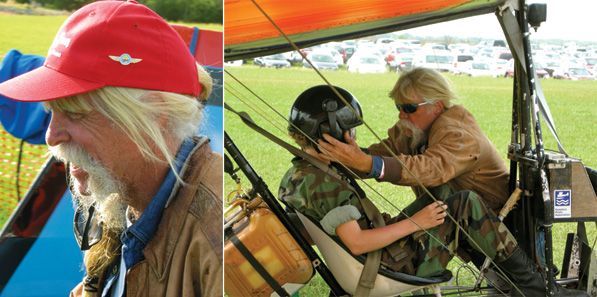
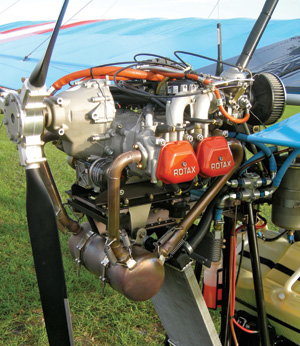
Laverne demonstrated a stall, a non-event, before turning the plane over to me. With the low panel, the motorcycle windshield, and a yaw string mounted on a post ahead of the windshield, the sight picture was much like a Schweizer 2-33 sailplane. The handling, particularly the need for rudder, was also much like the 2-33, except the controls were firmer. Turns left and right were non-events except for the turbulence and the considerable drift, turning my absolutely perfect circles in the air into sloppy wobbles over the ground. Yaw control was no big deal, except for the gusts, but I thought that the yaw string should have had warning ranges such as “passenger is uneasy,” “passenger may fall out” or “passenger wishes he’d fallen out” marked for how much out of center it was.
These flight conditions were wonderful for seeking out weaknesses that might have been in the airplane (none found), but the bumps and chop certainly compromised the mission of the Drifter. In smooth air the ride would be great and the view fabulous, and the 912S engine is quiet enough that you wouldn’t annoy the neighbors. This flight, however, was a continuous series of corrections on all of the flight controls. Nothing major, but enough to keep you on your toes and make you fly the airplane, not just ride along like a coach-class passenger, albeit with better shoulder and headroom. Then again, even with the workload, it’s a whole lot more fun to actually be flying the airplane than just sitting there waiting for a checkpoint to emerge from the far horizon.
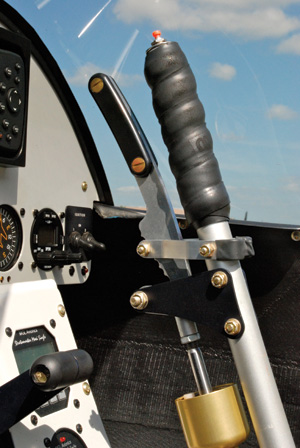
Sometime during the flight, we hit a good downdraft that lifted my forehead into the slipstream above the windshield. The wind got under the brim of my baseball cap, but the Lynx headsets kept it on. I’m 6-foot-4 when seated (I sit “tall in the saddle”), but the good news is that the tiny windshield does a good job of keeping the wind off. In the 60° Florida air, it was easy to dress warmly enough. I passed on Moore’s offer of a granny shawl that his wife gave him, brown with frills. If it had been a white silk scarf, sure, but a granny shawl?
Poor Conditions, Great Experience
Even in the chop, the Drifter showed off wonderful stability. With the pitch trim set, and this wasn’t hard to do, it was easy to fly with just the rudder. You can make turns left and right, but as in so many other airplanes, those rudder turns would induce pitch excursion, rudder deflection in one direction inducing nose up, the other nose down. The pitch excursions were relatively mild, but in the chop I was not patient enough to see if they would damp.
I tried a stall or two with low power, and the break was gentle with little, if any, buffet. The slackness in the stick was a good cue, and even a casual recovery took less than 200 feet. Somehow, in one of those stalls, it felt like I was flying and the airplane was pivoting around me. The Drifter has been spun, but it has not been through a full spin-test series.
Part of the appeal of an aircraft as open as the Drifter are the amazing views you have of interesting stuff on the ground. Just south of the big open field over which we did turns and stalls was an old mill, perhaps a steel mill. Because I knew nothing about it, the view prompted more questions than answers, but it was still cool to look down on. However, obstructions are potentially hazardous to a low-and-slow newbie. The bigger towers are painted and are lit with strobes, making them easier to see, but cell-phone towers and wires are not necessarily marked as well, and it only takes one.
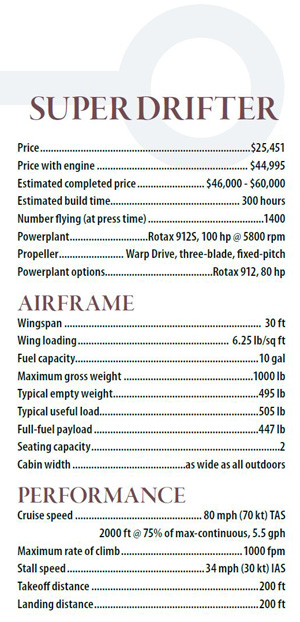
What Goes Up…
We went over to South Lakeland for some takeoffs and landings, and the wind was a direct crosswind. The good news was that the trees and buildings shielded us from much of the wind, but the bad news was the rotors that made short final far more interesting. Laverne demonstrated the first landing, and the rollout was impressively short.
I did the subsequent takeoff and landing, and things went well enough even in the turbulence. After liftoff, over the far end of the runway, we hit the house thermal and, indeed, flying the pattern was a yee-ha event, especially with no airplane around you when you hit a sharp downdraft. Being that much out in the open is an acquired taste, but definitely habit forming. Following Laverne’s lead, I flew his same tight, 500-foot pattern, turning final at about 200 feet. The Drifter will lose speed quickly with the nose up—ask me how I know—and the approved approach is to keep the nose well down, maybe with a bit of power, knowing that speed will disappear quickly in the flare.
In the flare and on rollout, before I could lower the tail, I noticed that I wasn’t quite straight and the tires were sliding slightly on the grass runway. Laverne commented that he thought I was steering with the control stick, something I’ve never been accused of before. Part of what was going on might have been the lack of fuselage ahead for a good sight picture, but then again, I’m not sure I’ve ever had that problem in my AirCam. Regardless, the Drifter showed that it is easy enough to land, but a checkout and a bit of practice are always good ideas.
Over the years, I’ve talked to several high-time Drifter pilots, and all have absolutely loved it. I can see why. In adverse conditions, it was easy to fly, and in reasonable conditions, it should be enormously fun, as much so as an AirCam at less than half the price.
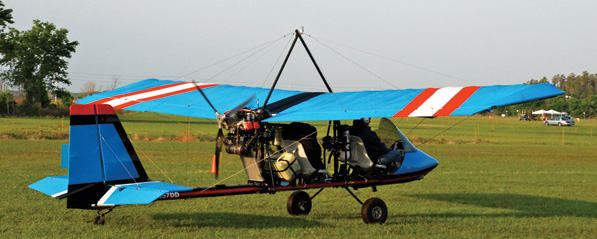

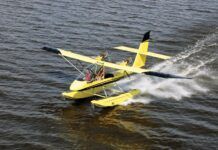
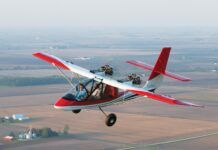
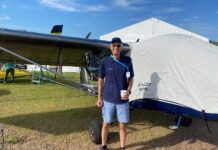
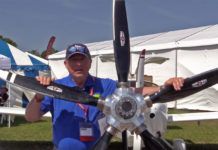
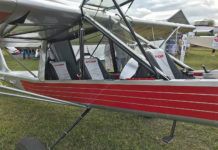
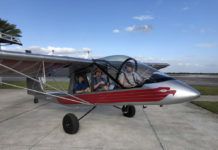
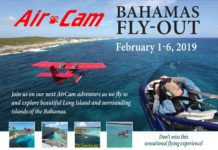
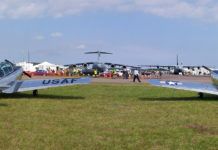
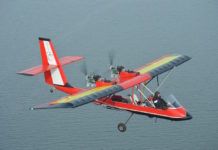
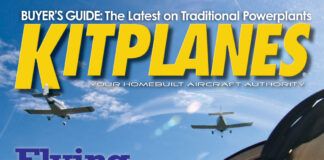
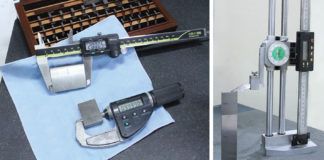
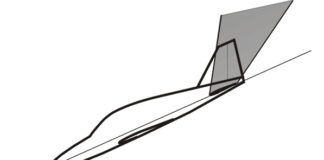

Are these Super Drifters still available and for sale to Australia?
Regards
Geoff
Check with the factory – most recent information was that they are available to order. https://www.kitplanes.com/buyers-guide/super-drifter/